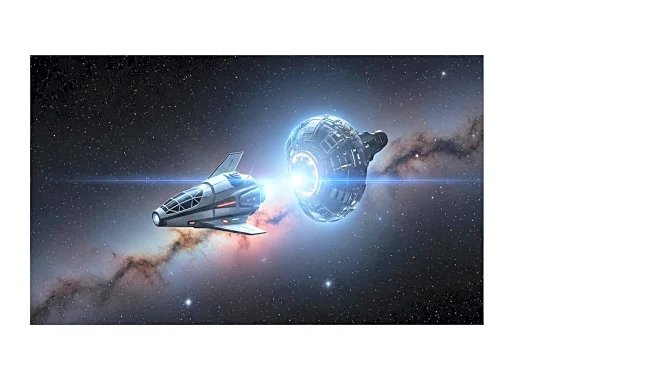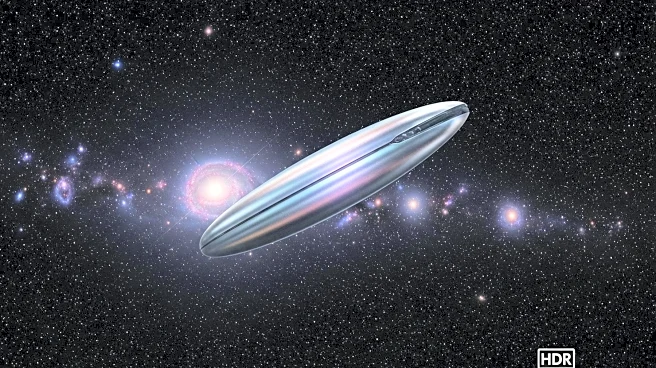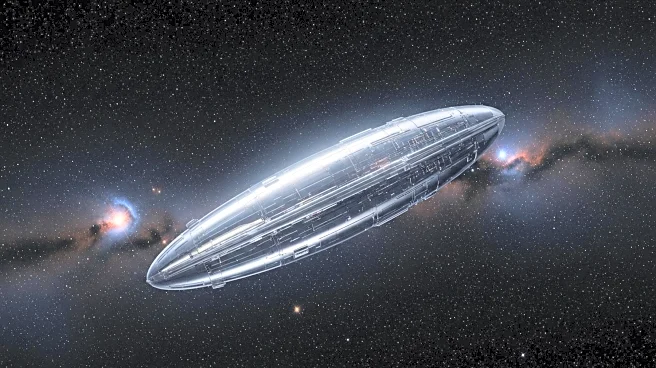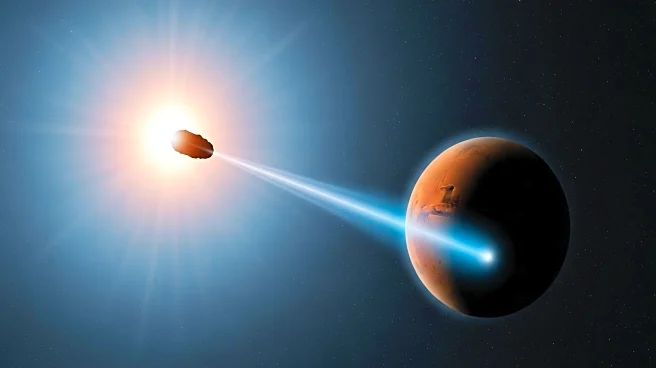What's Happening?
Recent observations from the Very Large Telescope in Chile have revealed an anomalous abundance of nickel and iron in the interstellar object 3I/ATLAS. The data shows a high production rate of nickel atoms and a high nickel to iron ratio, which is unusual compared to solar system comets. The presence of these metals in the comet's gas plume is unexpected due to the low surface temperature, which typically prevents the sublimation of minerals containing nickel and iron. The findings suggest that 3I/ATLAS exhibits extreme properties in its early activity phases.
Why It's Important?
The discovery of unusual metal production in 3I/ATLAS provides valuable insights into the composition and behavior of interstellar objects. Understanding these properties can enhance scientific knowledge of cometary formation and evolution, contributing to broader astrophysical research. The findings may influence future studies on interstellar objects, potentially leading to new theories about their origins and interactions with solar systems. This research underscores the importance of advanced telescopic technology in uncovering cosmic phenomena.
What's Next?
NASA's Mars Reconnaissance Orbiter and ESA's Mars orbiters are scheduled to observe 3I/ATLAS as it passes near Mars, providing further data on its composition and activity. These observations may refine estimates of the object's size and mass, offering deeper insights into its characteristics. Continued research on 3I/ATLAS could lead to discoveries about the potential for life-supporting elements in interstellar objects.
Beyond the Headlines
The study of 3I/ATLAS raises questions about the potential for technological artifacts among interstellar objects, challenging existing narratives about cosmic phenomena. It highlights the role of scientific exploration in expanding human understanding of the universe and inspiring future generations to pursue scientific careers.










